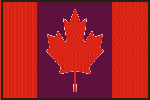
THE CANADIAN ANTI-DUMPING AND COUNTERVAILING PROCESS
BACKGROUND:
?Canadian dumping and subsidy investigations are conducted under the Special Import Measures Act (SIMA) to address allegations of unfair import trade in the form of ?umped?or ?ubsidized?goods.
?Actions under SIMA are a shared legislative responsibility between the Canada Border Services Agency (CBSA) and the Canadian International Trade Tribunal (CITT).
?The CBSA is the federal government agency responsible for Canadian trade, and border administration. The CBSA reports to Parliament through the Minister of Public Safety and Emergency Preparedness.
?The Anti-dumping Dumping and Countervailing Directorate in the Customs Branch of the CBSA is responsible for the administration of SIMA.
?The President, the senior official of the CBSA, is responsible for SIMA investigations and has sole statutory responsibility for making almost all of the key decisions in a dumping or countervailing investigation.
?The CITT is an administrative tribunal operating within Canada? trade remedies system. It is an independent quasi-judicial body that carries out its statutory responsibilities in an autonomous and impartial manner and reports to Parliament through the Minister of Finance.
?The Department of Finance has policy and legislative responsibility for SIMA.
THE ROLE OF THE CBSA:
?The CBSA is responsible for the initiation of investigations and for carrying out factual investigations to determine the existence and the amount of dumping or subsidizing.
?The President (as opposed to the Minister) has most of the decision making authority in SIMA. This reflects the desire of Parliament to maintain the anti-dumping and countervailing program as an administrative rather than a political process. Most of the President's decisions in the Act that are not controversial or politically sensitive are further delegated to subordinate officials within the CBSA.
?Investigations are launched in response to complaints from Canadian producers if adequate written evidence is presented to the CBSA to substantiate that the goods are being dumped or subsidized and that they are causing injury.
?The CBSA works closely with Canadian producers, particularly small or medium-sized enterprises, by providing technical assistance in the preparation of a dumping or subsidy complaint.
?When a complaint is received which is properly documented, the CBSA advises the complainant and the government of the country of export of this fact.
?The CBSA does not publicize the receipt of a dumping or subsidy complaint prior to the initiation of an investigation since the public acknowledgment of the filing of a complaint can cause significant uncertainty in the market related to purchasing and pricing decisions. This practice is consistent with WTO guidelines.
?The CBSA has 30 days to decide whether an investigation should be initiated.
?Once an investigation is initiated, the CBSA issues a public notice and notifies all interested parties including the complainant, importers, exporters and the government of the country of export. A press release is also issued.
?Under the law, the CBSA normally has 90 days to conduct a preliminary investigation, but this can be extended to 135 days in complex cases.
?In a dumping investigation, the CBSA must establish whether the goods exported to Canada during the period of investigation were dumped and calculate the margin (i.e. the amount) of such dumping in respect of these goods.
?In a subsidy investigation, the CBSA must establish whether the goods have been subsidized and the amount of subsidy. It must also determine if the subsidy programs under review can be deemed as actionable and consequently subject to countervailing measures under Canadian and international law.
?Factual evidence on sales and costing practices is requested from exporters. In the case of subsidies, information is also requested from the foreign governments.
?Submissions from exporters and foreign governments are verified by the CBSA through on-site verification visits.
?If imports are being dumped or subsidized and the CITT makes a preliminary determination of injury, the President will make a preliminary determination of dumping or subsidizing. At this stage, provisional anti-dumping and countervailing duties are imposed on imports in order to provide interim relief to the Canadian industry.
?The CBSA? investigation is continued for a further 90 days to conclude the investigation and make a final decision on the matter.
?Interested parties are notified of the preliminary and final determinations and public notices are issued. Press releases are issued at these stages.
THE ROLE OF THE CITT:
?The CBSA notifies the CITT when a dumping or subsidy investigation is initiated. This triggers the CITT? preliminary inquiry into whether the evidence discloses a reasonable indication that the dumping or subsidizing has caused injury or retardation or is threatening to cause injury to Canadian industry.
?The CITT will base its preliminary determination on the administrative record transferred to it by the CBSA and on written submissions received from parties. Oral hearings can be held when they are considered necessary.
?The CITT will make its preliminary determination of injury within sixty days after the initiation of an investigation.
?If the CITT makes a preliminary determination of injury with respect to some or all of the goods, the CBSA will proceed to make a preliminary determination of dumping or subsidization in respect of those goods.
?The CBSA notifies the CITT when a preliminary determination of dumping or subsidization is made. This triggers the CITT? investigation into whether the dumping or subsidizing is causing injury to Canadian industry.
?The CITT issues questionnaires to Canadian producers, importers and other interested parties in order to help assess the effects of the dumping or subsidization on Canadian production.
?At approximately the same time as the President makes a final determination of dumping or subsidization, the CITT holds public hearings in order to allow the parties the opportunity to make representations on the question of injury. Parties appearing before the CITT are normally represented by counsel.
?The CITT makes it? finding within four months of the President? preliminary determination.
?If the CITT finds that the imports into Canada have caused injury to Canadian industry, the CBSA imposes definitive anti-dumping or countervailing duties.
?If the CITT makes a negative finding, all proceedings are terminated and the CBSA refunds the provisional duties collected.
Public Interest Inquiries:
?After an injury finding is made, the CITT can be requested to conduct a public interest inquiry to determine if the imposition of anti-dumping or countervailing duties is in the public interest. Interested persons may make representations. If the CITT decides that the imposition is not in the public interest, it will prepare a report to the Minister of Finance with its recommendations. The Minister of Finance then decides whether a reduction in duties is warranted.
Expiry Reviews:
?A CITT injury finding remains in effect for five years. At the conclusion of this period, the CITT may conduct a review to determine whether the finding should be extended for another five-year period.
?If the CITT decides to conduct an expiry review, it will notify the CBSA which will then conduct an investigation to determine if there is a likelihood of resumed or continued dumping or subsidizing if the injury order or finding is allowed to expire.
?The CBSA will conduct this investigation by issuing requests for information to Canadian producers, importers, exporters and foreign governments, in the case of subsidy investigations. The CBSA must make its determination within 120 days after receiving notice from the CITT. The CBSA will then advise the CITT of the results of its investigation.
?If the CBSA finds that there is no likelihood of resumed or continued dumping or subsidization in respect of some or all of the goods, the CITT will rescind the order or finding in respect of those goods.
?If the CBSA finds that there is a likelihood of resumed or continued dumping or subsidizing in respect of some or all of the goods, the CITT will proceed with its inquiry into whether such dumping or subsidizing is likely to cause material injury to the domestic industry.
?If the CITT finds that there is a likelihood of injury resulting from the dumping or subsidizing, it will continue the order or finding, with or without amendment.
THE ROLE OF THE CBSA AFTER A CITT FINDING:
?During the period in which a CITT injury finding is in effect, the CBSA enforces the finding by reviewing importations to determine if they are subject to the finding and to assess anti-dumping and countervailing duties in the appropriate amount and in a timely manner. Effective enforcement is critical to ensure that Canadian industry derives the maximum protection afforded by the finding.
?Under the Canadian system of imposing anti-dumping duties on a prospective basis, exporters have the option of increasing the price of the goods to Canada to a level high enough to eliminate dumping. Where this occurs, no duties are collected but importations must be monitored to ensure that pricing levels to Canada are sufficient.
?The CBSA also conducts administrative reviews, usually on an annual basis, to update pricing levels or the amount of subsidy on the goods. This information is collected through questionnaires similar to those used in the original investigation and normally involves on-site verification visits by CBSA officials.
CHALLENGES TO CBSA AND CITT DECISIONS:
?Final decisions made by the CBSA and the CITT can be appealed to the Federal Court. Under the North American Free Trade Agreement (NAFTA), a party may choose an alternate appeal process by requesting a review by a binational dispute panel instead of the Federal Court.
?Also, final decisions can be challenged under the dispute settlement process at the World Trade Organization (WTO) where a dispute settlement panel can determine whether Canada? actions are consistent with its rights and obligations under WTO Agreements. A negative decision by a WTO Panel will normally require Canada to bring its action into consistency with its WTO obligations.
World Wide Web Sites
CBSA
Anti-dumping and Countervailing Directorate
http://www.cbsa-asfc.gc.ca/sima/menu-e.html
Canadian International Trade Tribunal (CITT)
http://www.citt.gc.ca
- 项目对接快讯
-
- 最新信息
- 热门信息


